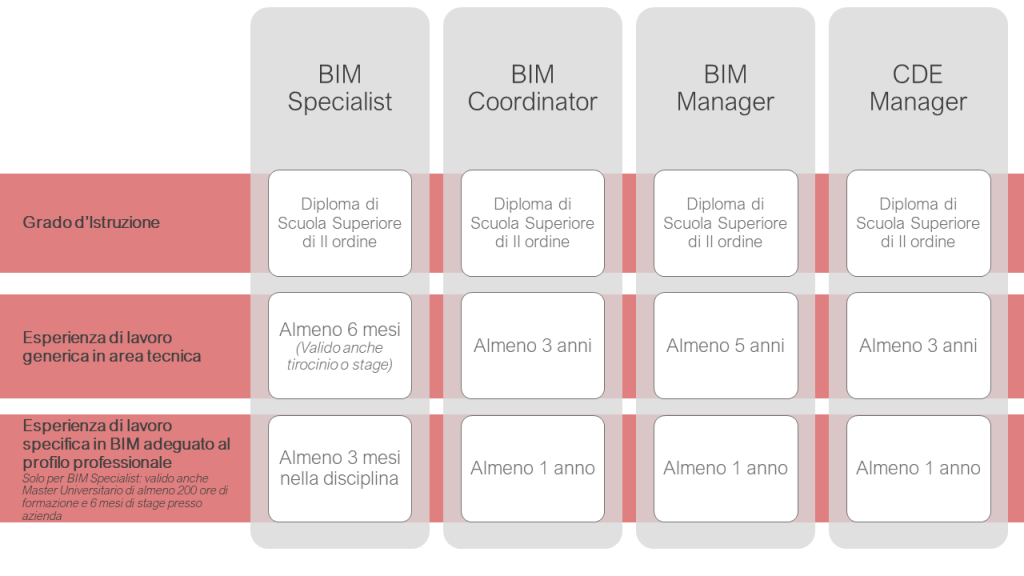The BIM is compulsory in Italy from January 2019 for public contracts with an amount equal to or higher than 100 million euros; it will be compulsory until 2025, when all public works will necessarily have to be managed according to the BIM methodology.
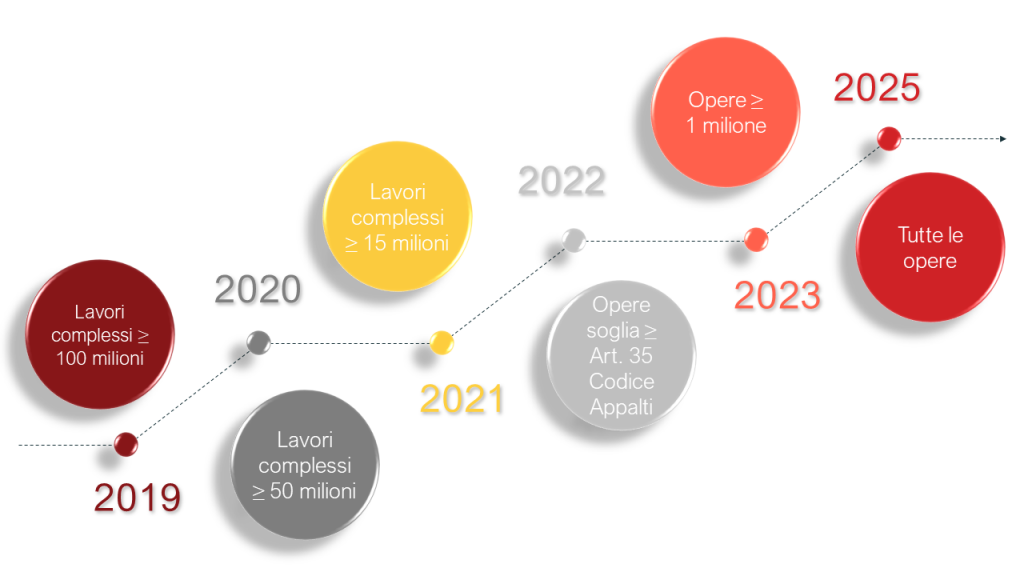
The training system, however, is not yet fully structured.
After the first compulsory schooling cycle which takes place over a period of 8 years, national secondary education programmes and regional vocational training programmes do not yet consider BIM teaching. Some experiences are to be counted as the result of a single teacher rather than school guidelines. Students who are already familiar with BIM software come mainly from the vocational school for surveyors (building technicians): they frequently have BIM authoring skills at an architectural level which can vary from a low to a high level, in one or more software. High vocational schools teach young professionals the practical use of BIM rather than the methodological approach.
Universities carry out traditional general tertiary education and offer diplomas of varying duration, as well as professionally oriented university masters degrees. The Departments of Architecture and Civil Engineering introduced BIM teaching several years ago. The Department of Architecture of the University of Ferrara has been teaching BIM software and methodologies in the course of Representation Techniques since 2000. Currently, most of the Departments of Architecture or Civil Engineering already have at least one course in which BIM methodology is introduced. Moreover, due to the Italian architectural heritage, some departments are also trying to integrate new approaches on how to use BIM for existing buildings and the built environment into teaching. Architectural authoring is still the most recognised use of BIM, while more advanced exploitation of building data is yet to take place.
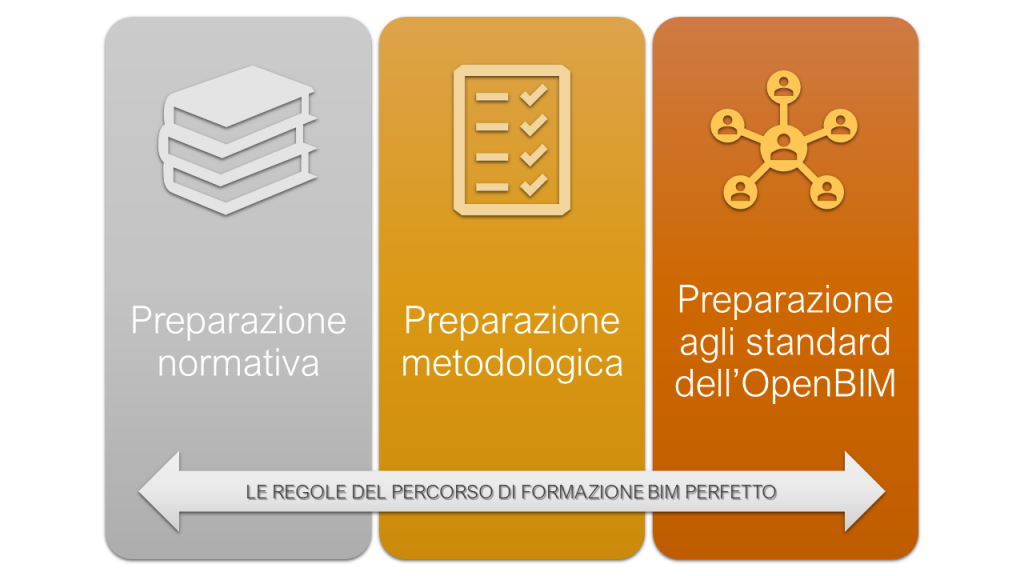
In the field of postgraduate education, in recent years, a number of master’s degrees and higher specialisation courses have been established, each with its own specific focus. Since postgraduate education is also aimed at professionals who have already experienced the construction sector and aim to manage the construction process better, a high level of attention is paid to teaching management techniques. Postgraduate masters can be divided into two levels:
- 1st level master’s degree: it can be developed by universities or private bodies; the degree is an enrolment requirement; it is equivalent to a master’s degree in international qualifications.
- 2nd level master’s degree: can only be developed by universities; a five-year course of study is an enrolment requirement; it is equivalent to a master’s degree in international qualifications.
2nd level master’s degree available in Italy, lasting 1 year:
- Politecnico di Milano – Scuola Master Fratelli Pesenti “BIM manager”.
- University of Brescia “BIM-Based Construction Project Management”.
- University of Rome – La Sapienza “B.I.M. Building Information Modeling”.
- University of Ferrara “eBIM: existing Building Information Modeling for the project management on the built environment”.
- University of Pisa “Master B.I.M. (Building Information Modeling)”.
- University of Calabria “BIM Manager e costruzioni ecosostenibili – Edilizia 4.0”.
- University of Naples Federico II “BIM and Sustainable Integrated Design”.
- University of Reggio Calabria “BIM, Building Information Modeling”.
In recent years, still, several training courses have been developed by private bodies with quite good results. In addition, professional associations, especially those that bring together architects, engineers and surveyors, introduce compulsory “continuous training”: every professional, who needs to be enrolled in an association to provide his services to the public, must participate in several courses over time to improve his skills.
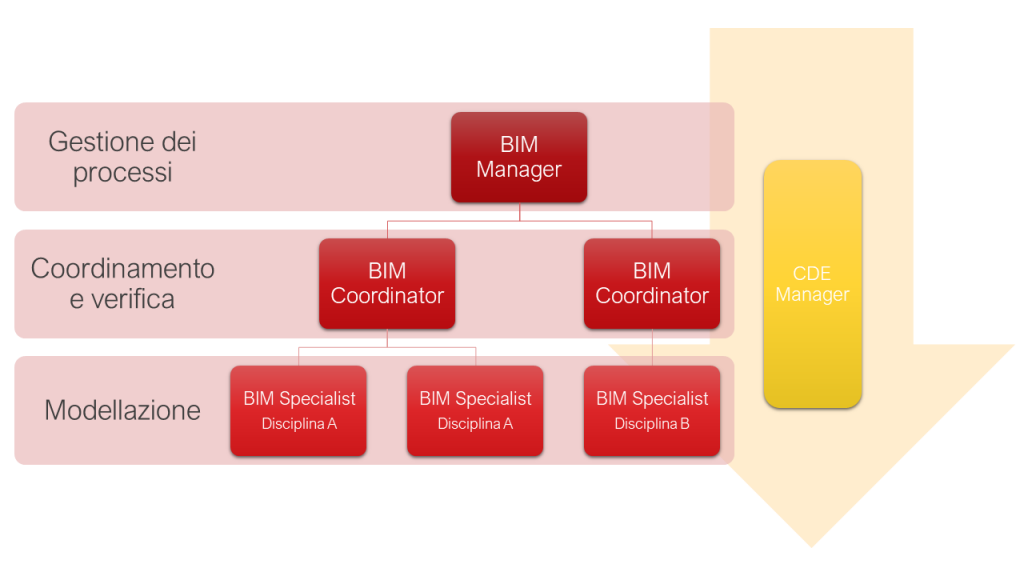
The UNI 11337-7:2018 standard is the regulatory reference for BIM in Italy, which has introduced as many as four figures: BIM Manager, BIM Coordinator, BIM Specialist, CDE Manager, to which newer figures, already known in the international context, BIM Expert, BIM Consultant, BIM User, Information Manager, BIM Discipline Leader, etc., have been added.
In fact, these new professional figures do not belong to new professional orders (such as that of engineers and/or architects) or colleges (such as that of surveyors or industrial experts), but operate at a specialist level in the market, like all the traditional professions organised in orders or colleges.
Anyone who decides to undertake a training course to obtain a Qualification and Certification for one of the figures of the BIM methodology in Italy, is recognised as a professional in the specialist field in accordance with Law 4/2013. This recognition mechanism ensures the possession of the curricular and professional qualification requirements required to carry out the activity, as well as the possession by the registered professional of a certification issued by an accredited body.
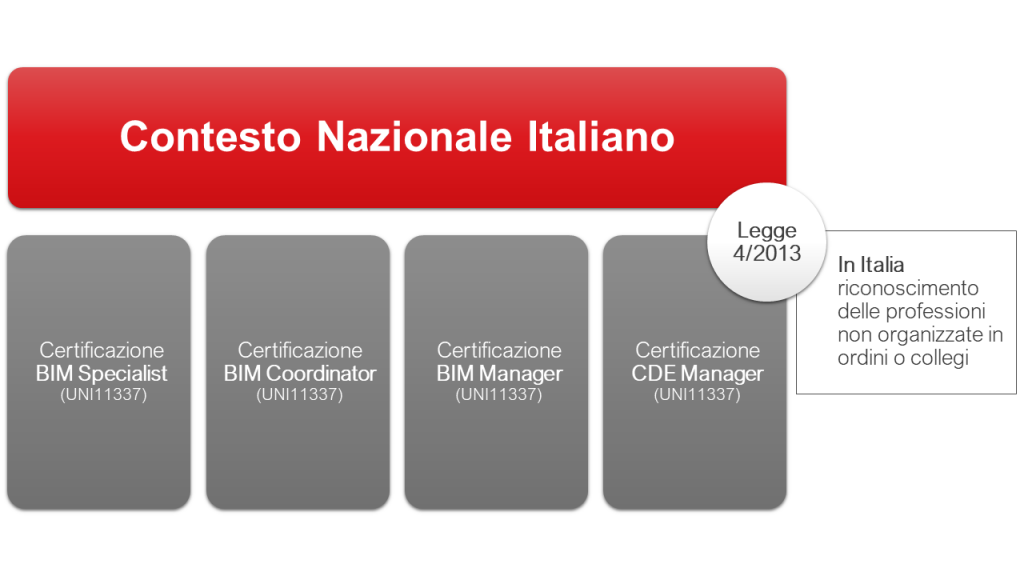
The national training course is regulated first and foremost by ACCREDIA, the sole Italian accreditation body. Accredia, in line with what is formulated in UNI CEI EN ISO/IEC 17024, defines the requirements for the accreditation of certification bodies, training bodies, trainers and professionals trained in any disciplinary field.
The four professional figures introduced by the standard relate according to a hierarchical pyramid scheme: the BIM Specialist carries out the activities according to what is coordinated by the BIM Coordinator which, in turn, responds to the guidelines dictated by the BIM Manager. To the first three levels is added the transversal profile of the CDE Manager which supports the digitisation of the job.
To obtain certification in one of the BIM professions, in Italy, it is necessary to take an examination at a Personnel Certification Body, accredited by ACCREDIA according to ISO/IEC 17024 standards. Access to the examination is subject to the possession of a series of requirements: together with theoretical knowledge and specific skills on a BIM application, previous work experience is always required, both in the technical field and in contracts managed according to the BIM methodology.
